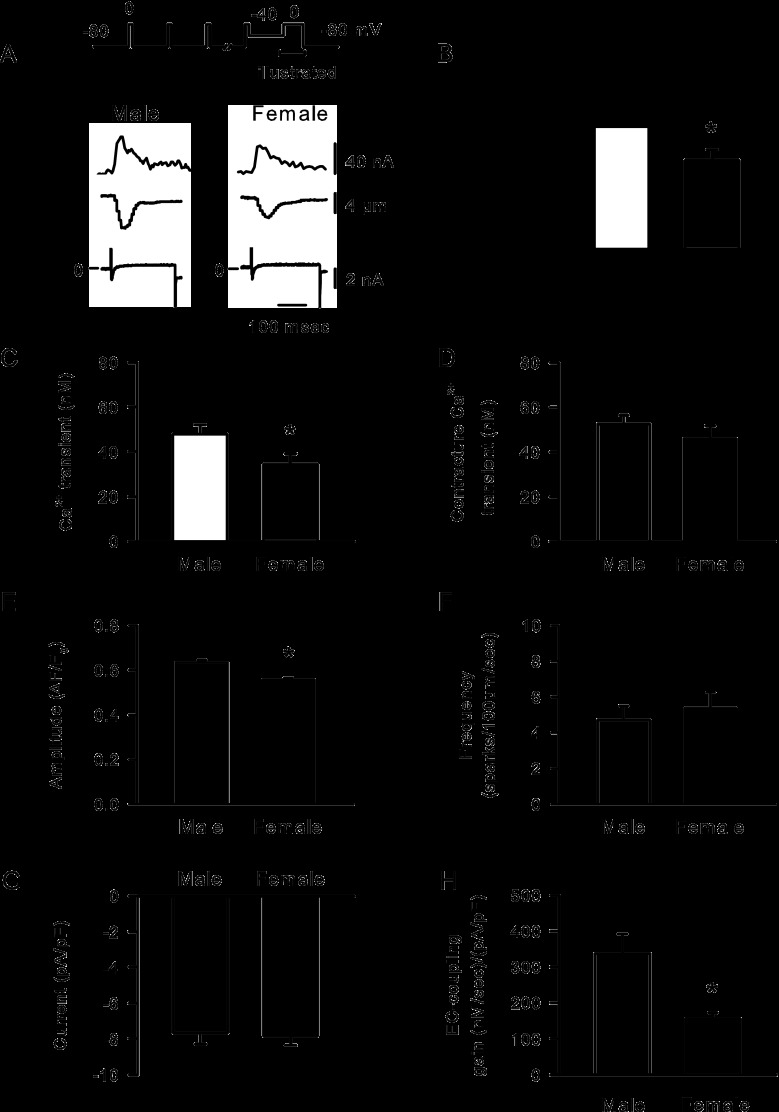Fig. 1.
Mechanisms of cardiac EC coupling differ between the sexes. a Sample recordings of Ca2+ transients (top), contractions (middle) and Ca2+ current (bottom) in ventricular myocytes from 3-month-old male and female rats. Responses were simultaneously activated by a voltage clamp test step from −40 to 0 mV. b, c Contractions and Ca2+ transients were significantly smaller in myocytes from females when compared to males. d SR Ca2+ content, evaluated by the rapid application of 10 mM caffeine, was similar in the two groups. e, f Ca2+ spark frequency did not differ between the sexes, but Ca2+ spark amplitudes were smaller in cells from females when compared to males. g Peak Ca2+ currents were similar in myocytes from males and females. h The gain of EC coupling (SR Ca2+ release per unit Ca2+ current) was much lower in cells from females compared to males. Reprinted from Farrell et al. [40] with permission

